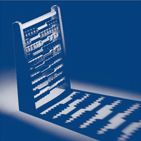Background
The purchase of capital assets often represents one of the more significant expenses incurred by a business. The depreciation charged on these assets is not an allowable deduction in calculating taxable profits, instead tax relief is given in the form of capital allowances which can represent a significant tax saving particularly with the introduction earlier this year of the new 130% super deduction which we have outlined in previous Muras Matters.
The complexity of capital allowances have increased over recent years so this week we will look at a summary of allowances that are available.
Detail
Super-deduction
- The super-deduction will apply to companies only.
- The 130% first year allowance will apply to expenditure which usually qualifies for main rate writing down allowances.
- For special rate assets expenditure (subject to certain exclusions) a 50% first year allowance will apply.
- The super deduction applies to expenditure on assets between 1 April 2021 and 31 March 2023, but excludes expenditure contracted for prior to 3 March 2021.
- Expenditure must be on new unused plant and machinery. Excluded assets include:
- Second hand plant and machinery;
- Cars;
- Assets acquired from connected party transactions.
- Disposal of an asset before 1 April 2023 on which a super-deduction has been claimed will broadly be subject to either a balancing charge at 1.3 times the disposal proceeds or 50% of the disposal proceeds depending on which super-deduction was previously claimed.
- Disposal after 31 March 2023 on which a super-deduction has been claimed will be subject to 100% balancing charge on the disposal proceeds.
Annual Investment Allowances (AIA)
- 100% first year allowance;
- Available on plant and machinery, integral features and long life assets but not cars;
- Maximum allowance £1 million per annum;
- Following the budget the AIA of £1 million has been extended until 31 March 2023, when it will then reduce to £200,000.
Main rate pool
- 18% reducing balance allowance;
- Available on:
- Plant and machinery expenditure on which neither AIA or first year allowances have been claimed and which is not allocated to the special rate pool;
- New and unused cars with CO2 emissions of 50g/kmor less (over 50g/km but not more than 110g/km before April 2021);
- Second hand cars with CO2 emissions of 50g/kmor less (110g/km or less before April 2021) or a second hand electric car.
Special rate pool
- 6% reducing balance allowance (reduced from 8% in April 2019);
- Available on:
- Integral features such as electrical systems (including lighting systems), cold water systems, space or water heating systems, powered systems of ventilation, air cooling or air purification systems, lifts, escalators or moving walkways and external solar shading;
- Thermal insulation of an existing building;
- Assets with a predicted useful life of at least 25 years and costing £100,000 or more;
- New and unused cars with CO2 emissions of 50g/kmor less (over 50g/km but not more than 110g/km before April 2021);
- Second hand cars with CO2 emissions of 50g/kmor less (110g/km or less before April 2021) or a second hand electric car.
First year allowances
- 100% first year allowance;
- Available for:
- New and unused cars with CO2 emissions of 0g/km or car is fully electric (50g/km or less before April 2021). The first year allowance is available on expenditure up to 31 March 2025;
- Gas refuelling stations (available until 31 March 2025);
- New and unused zero-emission goods vehicles (available until 31 March 2025);
- New electric vehicle charging points (only available until 31 March 2023)
- Expenditure on plant and machinery for use primarily in a designated freeport tax site (companies only).
Structures and buildings allowance
- 3% straight line basis allowance over 33 1/3 years (2% prior to April 2020) on qualifying expenditure;
- 10% straight line basis allowance over 10 years on qualifying expenditure on a building or structure in a Freeport tax site;
- Available on:
- Capital expenditure incurred in the construction or purchase of a commercial building or structure but not land;
- Expenditure on the renovation or conversion of a part of an existing building, together with expenditure on repairs incidental to the renovation or conversion.
If you would like more information on any of the allowances outlined above or whether any capital expenditure you are considering may qualify for an allowance, please contact our Tax Director, Jenny Marks.
Our Current working arrangement – We remain ‘Open for business’
Our staff are gradually returning to office based working, whilst continuing to work from home at other times. They can still be contacted in the usual way either via email or by calling the office number where reception will divert your call to the appropriate staff member.
To see our other news items please visit our Muras Baker Jones – Blog.



